The Magic Spell by Amonakur

In this article i will try to introduce you to the concept of Magic
Spell. First, I will give you a definition of Magic, to allow you to
reach the point, without creating any trouble, and will discuss
matters in a rational and culturally accepted way, then i shall
introduce you to the metaphysical concepts that underlay these
magical procedures.
Opinion makers, that are at work nowadays, a century ago were called
sorcerers. Reality and sciences were not as deep as the ones we know
today, and known principles but obscured ones, took place without
anyone knowing exactly what was going on. I believe that once you
own an instrument, it is very easy to do a job, in comparison with
people that do not know anything about the existence of a knife, a
fork, a spoon, a flute, a string, a pen, a typewriter, a pc, etc…

This means that there exists a wide “time gap” between the ideation
of thoughts, inventions, ideas, sciences, and their applications in
society. This “time gap” is culturally speaking to the complete
advantage of the groups that run “protection copyright business”,
and own knowledge that they do not only protect, but share these
informations with other services, secretly or openly, spreading
these concepts elsewhere, to their benefit, profit and gain.
So, as laws should be based and should act according to existent
matters, objects, projects, items, software or hardware, they often
do not apply to intentions, and these private “entities” will have a
chance to profit of this “50 years + time gap” before any government
will consider adequately what’s going on.

Copyright offices, as Patent offices, Editors, Producers, etc… all
around the world, own fresh informations that use to their
advantage, and since Internet has spread out all over the place,
“Private servers”, ( in real time ), that offer free web space to
privates, most frequently, sell these private informations to
“economically speaking” interested private groups that use these
infos to make money, swallowing everything that there is to absorb.

This time gap should be reduced, if not totally eliminated, by
“Justice”, since it creates disparity, inequality, and gives to
private companies total advantage upon matters that have to come.

A just control, should be based on public institutions that run
these affairs with no personal interests, in the name of science and
society, with the aim of upgrading society, rather than downgrading
it every time “they” want more, sucking entire social systems into
unrealistic problems to legitimate consequential monomers to their
maximum benefit.
In the latest 100 years, we can openly say that intellectual
property, that could have moved scientifically onwards our societies
of about 500 years, has been totally absorbed, erased, bought and
not taken care of, by groups aiming to silence and secrecy, rather
than evolution and welfare.
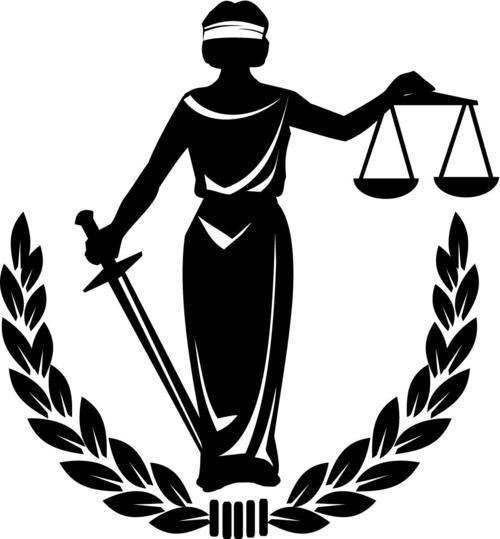
It is time to reconsider things, and make good use of what we
already know for social benefit. The meaning of common sense is in
fact the opposite of ( uni directional ) private sense. It is now
time for scientist, to offer their solutions to society. Artists and
dreamers, do it regularly, although no one considers them, and if
they have any chance to appear even once on the media, they will
disappear from them immediately after.
Unfortunately, there exists a register that contains the names of
people that will never have a chance to be published, or receive
visibility in media streams that could regenerate society or make it
a little better.

This is the present situation, and opportunities to reach social
status, importance, consideration, etc… are given to the ones that
serve these corporations and groups, rather than to the ones that
are willing to help.
I’m not sorry or happy, about that, and i can tell by the way
emptyness is filling up life, that this extra space won’t take a
long to offer “change” the possibility to transform life. Vitality,
is what they lack. Spontaneity, and true love.
Scientists, freely, ( avoiding filters created to take total control on their own ideas ), should offer them as they wished, to the community. This is love. Altruism, and the way to solve crisis. Sharing, is the right way. Secrets are good for the hiding ones. We are ready to live in equilibrium and harmony. Let’s show them how. Non reactivity. Interaction and understanding. Conversion and amelioration.

Now about magic spells
Magic is the claimed art of manipulating aspects of reality either
by supernatural means or through knowledge of occult laws unknown to
science. It is in contrast to science, in that science does not
accept anything not subject to either direct or indirect
observation, and subject to logical analysis, whereas practitioners
of magic claim it is an inexplicable force beyond logic. Magic has
been practiced in all cultures, and utilizes ways of understanding,
experiencing and influencing the world somewhat akin to those
offered by religion, though it is sometimes regarded as more focused
on achieving results than religious worship. Magic is often viewed
with suspicion by the wider community, and is commonly practiced in
isolation and secrecy.
Modern Western magicians
generally state magic’s primary purpose to be personal spiritual
growth. Modern perspectives on the theory of magic broadly follow
two views, which also correspond closely to ancient views.The first
sees magic as a result of a universal sympathy within the universe,
where if something is done here a result happens somewhere else. The
other view sees magic as a collaboration with spirits who cause the
effect.
Etymology
Through late 14th century Old French magique, the word “magic”
derives via Latin magicus from the Greek adjective magikos used in
reference to the “magical” arts of the Magicians (Greek: magoi,
singular mágos, the Zoroastrian astrologer priests. Greek mágos is
first attested in Heraclitus (6th century BC, apud. Clement
Protrepticus 12) who curses the Magians and others for their
“impious rites”.
Likewise, sorcery was taken in ca. 1300 from Old French sorcerie,
which is from Vulgar Latin *sortiarius, from sors “fate”, apparently
meaning “one who influences fate”.
Common features of magical practice
Rituals
Magical rituals are the precisely defined actions (including speech)
used to work magic. Bronislaw Malinowski describes ritual language
as possessing a high “coefficient of weirdness,” by which he means
that the language used in ritual is archaic and out of the ordinary,
which helps foster the proper mindset to believe in the ritual. S.
J. Tambiah notes, however, that even if the power of the ritual is
said to reside in the words, “the words only become effective if
uttered in a very special context of other action.” These other
actions typically consist of gestures, possibly performed with
special objects at a particular place or time. Object, location, and
performer may require purification beforehand. This caveat draws a
parallel to the felicity conditions J. L. Austin requires of
performative utterances. By “performativity” Austin means that the
ritual act itself achieves the stated goal. For example, a wedding
ceremony can be understood as a ritual, and only by properly
performing the ritual does the marriage occur. Émile Durkheim
stresses the importance of rituals as a tool to achieve “collective
effervescence,” which serves to help unify society. Psychologists,
on the other hand, describe rituals in comparison to
obsessive-compulsive rituals, noting that attentional focus falls on
the lower level representation of simple gestures. This results in
goal demotion, as the ritual places more emphasis on performing the
ritual just right than on the connection between the ritual and the
goal. However, the purpose of ritual is to act as a focus and the
effect will vary depending on the individual.
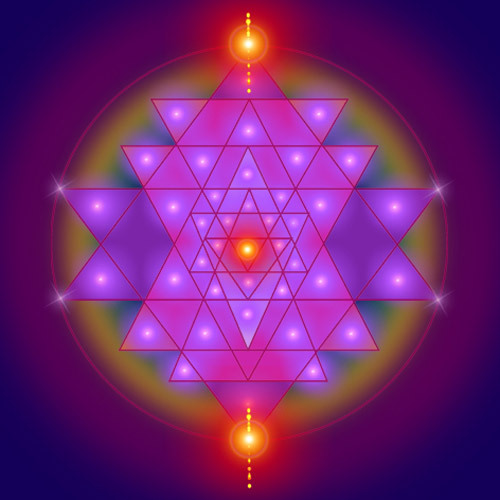
Magical Symbols
Magic often utilizes symbols that are thought to be intrinsically
efficacious. Anthropologists, such as Sir James Frazer (1854–1938),
have characterized the implementation of symbols into two primary
categories: the “principle of similarity,” and the “principle of
contagion.” Frazer further categorized these principles as falling
under “sympathetic magic,” and “contagious magic.” Frazer asserted
that these concepts were “general or generic laws of thought, which
were misapplied in magic.”

The Principle of Similarity
The principle of similarity, also known as the “association of
ideas,” which falls under the category of sympathetic magic, is the
thought that if a certain result follows a certain action, then that
action must be responsible for the result. Therefore, if one is to
perform this action again, the same result can again be expected.
One classic example of this mode of thought is that of the rooster
and the sunrise. When a rooster crows, it is a response to the
rising of the sun. Based on sympathetic magic, one might interpret
these series of events differently. The law of similarity would
suggest that since the sunrise follows the crowing of the rooster,
the rooster must have caused the sun to rise. Causality is inferred
where might not otherwise have been. Therefore, a practitioner might
believe that if he is able to cause the rooster to crow, he will be
able to control the timing of the sunrise. Another use of the
principle of similarity is the construction and manipulation of
representations of some target to be affected (e.g. voodoo dolls),
believed to bring about a corresponding effect on the target (e.g.
breaking a limb of a doll will bring about an injury in the
corresponding limb of someone depicted by the doll).
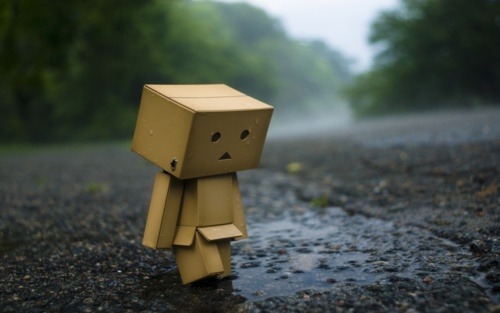
The
Principle of Contagion
Another primary type of magical thinking includes the principle of
contagion. This principle suggests that once two objects come into
contact with each other, they will continue to affect each other
even after the contact between them has been broken. One example
that Tambiah gives is related to adoption. Among some American
Indians, for example, when a child is adopted his or her adoptive
mother will pull the child through some of her clothes, symbolically
representing the birth process and thereby associating the child
with herself. Therefore, the child emotionally becomes hers even
though their relationship is not biological. As Claude Lévi-Strauss
would put it: the birth “would consist, therefore, in making
explicit a situation originally existing on the emotional level and
in rendering acceptable to the mind pains which the body refuses to
tolerate…the woman believes in the myth and belongs to a society
which believes in it.
Symbols, for many cultures that use magic, are seen as a type of
technology. Natives might use symbols and symbolic actions to bring
about change and improvements, much like Western cultures might use
advanced irrigation techniques to promote soil fertility and crop
growth. Michael Brown discusses the use of nantag stones among the
Aguaruna as being similar to this type of “technology.” These stones
are brought into contact with stem cuttings of plants like manioc
before they are planted in an effort to promote growth. Nantag are
powerful tangible symbols of fertility, so they are brought into
contact with crops to transmit their fertility to the plants.

Others argue that ritualistic actions are merely therapeutic.
Tambiah cites the example of a native hitting the ground with a
stick. While some may interpret this action as symbolic (i.e. the
man is trying to make the ground yield crops through force), others
would simply see a man unleashing his frustration at poor crop
returns. Ultimately, whether or not an action is symbolic depends
upon the context of the situation as well as the ontology of the
culture. Many symbolic actions are derived from mythology and unique
associations, whereas other ritualistic actions are just simple
expressions of emotion and are not intended to enact any type of
change.
Magical language
The performance of magic almost always involves the use of language
(in Western civilization, mainly Latin).[citation needed] Whether
spoken out loud or unspoken, words are frequently used to access or
guide magical power. In “The Magical Power of Words” (1968) S. J.
Tambiah argues that the connection between language and magic is due
to a belief in the inherent ability of words to influence the
universe. Bronislaw Malinowski, in Coral Gardens and their Magic
(1935), suggests that this belief is an extension of man’s basic use
of language to describe his surroundings, in which “the knowledge of
the right words, appropriate phrases and the more highly developed
forms of speech, gives man a power over and above his own limited
field of personal action.” Magical speech is therefore a ritual act
and is of equal or even greater importance to the performance of
magic than non-verbal acts. Yet not all speech is considered
magical. Only certain words and phrases or words spoken in a
specific context are considered to have magical power. Magical
language, according to C. K. Ogden and I. A. Richards’s (1923)
categories of speech, is distinct from scientific language because
it is emotive and it converts words into symbols for emotions;
whereas in scientific language words are tied to specific meanings
and refer to an objective external reality. Magical language is
therefore particularly adept at constructing metaphors that
establish symbols and link magical rituals to the world.
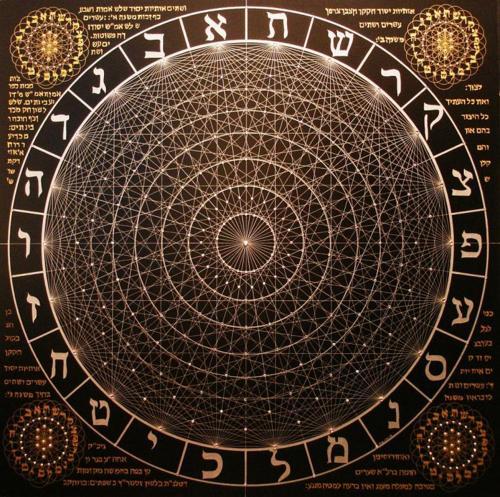
Malinowski argues that “the language of magic is sacred, set and
used for an entirely different purpose to that of ordinary life.”
The two forms of language are differentiated through word choice,
grammar, style, or by the use of specific phrases or forms: prayers,
spells, songs, blessings, or chants, for example. Sacred modes of
language often employ archaic words and forms in an attempt to
invoke the purity or “truth” of a religious or a cultural ‘golden
age.’ The use of Hebrew in Judaism is an example. Another potential
source of the power of words is their secrecy and exclusivity. Much
sacred language is differentiated enough from common language that
it is incomprehensible to the majority of the population and it can
only be used and interpreted by specialized practitioners
(magicians, priests, shamans, even mullahs).In this respect, Tambiah
argues that magical languages violate the primary function of
language: communication. Yet adherents of magic are still able to
use and to value the magical function of words by believing in the
inherent power of the words themselves and in the meaning that they
must provide for those who do understand them. This leads Tambiah to
conclude that “the remarkable disjunction between sacred and profane
language which exists as a general fact is not necessarily linked to
the need to embody sacred words in an exclusive language, magic is
conducted in every language all around the world with various
(Spacial words for each language is used) for example those words in
Arabic language (carairo ) and this is in Jewish language ( bahratit
).”

Magicians
A magician is any practitioner of magic; therefore a magician may be
a specialist or a common practitioner, even if he or she does not
consider himself a magician. All that is required is the possession
of esoteric knowledge, traits, or expertise that are culturally
acknowledged to harbor magical powers.
Magical knowledge is usually passed down from one magician to
another through family or apprenticeships, though in some cultures
it may also be purchased. The information transferred usually
consists of instructions on how to perform a variety of rituals,
manipulate magical objects, or how to appeal to gods or to other
supernatural forces. Magical knowledge is often well guarded, as it
is a valuable commodity to which each magician believes that he has
a proprietary right.
Yet the possession of magical knowledge alone may be insufficient to
grant magical power; often a person must also possess certain
magical objects, traits or life experiences in order to be a
magician. Among the Azande, for example, in order to question an
oracle a man must have both the physical oracle (poison, or a
washboard, for example) and knowledge of the words and the rites
needed to make the object function.
A variety of personal traits may be credited to magical power,
though frequently they are associated with an unusual birth into the
world. For example, in 16th century Friuli, babies born with the
caul were believed to be good witches, benandanti, who would engage
evil witches in nighttime battles over the bounty of the next years
crops.
Certain post-birth experiences may also be believed to convey
magical power. For example a person’s survival of a near-death
illness may be taken as evidence of their power as a healer: in Bali
a medium’s survival is proof of her association with a patron deity
and therefore her ability to communicate with other gods and
spirits. Initiations are perhaps the most commonly used ceremonies
to establish and to differentiate magicians from common people. In
these rites the magician’s relationship to the supernatural and his
entry into a closed professional class is established, often through
rituals that simulate death and rebirth into a new life.
Given the exclusivity of the
criteria needed to become a magician, much magic is performed by
specialists. Laypeople will likely have some simple magical rituals
for everyday living, but in situations of particular importance,
especially when health or major life events are concerned, a
specialist magician will often be consulted. The powers of both
specialist and common magicians are determined by culturally
accepted standards of the sources and the breadth of magic. A
magician may not simply invent or claim new magic; the magician is
only as powerful as his peers believe him to be.
In different cultures, various types of magicians may be
differentiated based on their abilities, their sources of power, and
on moral considerations, including divisions into different
categories like sorcerer, witch, healer and others.
Witchcraft
In non-scientific societies, perceived magical attack is an ideology
sometimes employed to explain personal or societal misfortune. In
anthropological and historical contexts this is often termed
witchcraft or sorcery, and the perceived attackers ‘witches’ or
‘sorcerers’. Their maleficium is often seen as a biological trait or
an acquired skill. Known members of the community may be accused as
witches, or the witches may be perceived as supernatural, non-human
entities. In early modern Europe and Britain such accusations led to
the executions of tens of thousands of people, who were seen to be
in league with Satan. Those accused of being satanic ‘witches’ were
often practitioners of (usually benign) folk magic, and the English
term ‘witch’ was also sometimes used without its pejorative sense to
describe such practitioners.
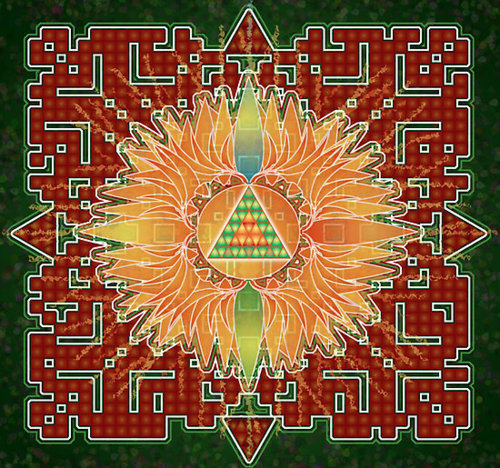
Similarity Clones ( this is my metaphysical explanation )
This principle explains why
nowadays we can see so many clones around.
Culturally speaking, viruses, that are in this case trojan programs
able to transfer themselves from one man to another, give the host
the opportunity to behave in a given way trough example. Media
characters, fiction, and history heroes, are good examples of
personalities that people with no identity or personality, let in.
Host of this kind, are similar to the original ones, but own a
personal peculiarity that still makes them different.
The metaphysical rule to which similar trojans are subject is the “non sharing” of a vital area in which they act, and when two of them meet, they will never look at themselves in the eyes, and the weaker, will soon depart from the area until the stronger moves out of it again. These vampires, act alone, are quite selfish and never share their food with other larvae. The person that has been affected by one of these larvae, has no vital energy in it’s eyes, which become darker, in a typical panda effect, all around the eyes, because these creatures absorb energy directly from the liver. They tend to avoid living in the same person or place at once, and will attack and absorb other hosts in the vicinity, starting from the weaker one like wolfs, if they are in need of food.
Typical examples of this kind are social programmed people, that believe they are Jesus, Napoleon, Heroes, Super Heroes, Fiction characters, actors, singers, politicians etc… enabling an internal discontinuity to take place, and opening the gates to their Temple. These characters are a good example of people wearing someone else’s clothes, that isn’t exactly the best thing to do if you want to be in control of yourself, rather than being controlled by some intruder, entity or program.
By acting in this way, people offer spirits of this kind a body to incarnate their wishes, and survive on this portion of the world. If the parasite is intelligent enough to share resources, it will survive without creating major damage. Once the larvae looses control of the situation, because the person is solving it’s problems with strong will and determination, the vampire will go crazy, and start a personal war against its host. Some use physical contact to move from one body to another, others use social programming, or bad examples to introduce you to vice, and a few of them attack the person that has lost control of itself, during nightmares, or because this person fainted, because of a physical accident that required disconnection protections, or because the person has assumed a drug that has opened the gates of the Sacred Garden, and unfortunately, not defending its territory, the Temple is spoilt.

Trojans are built and kept alive by acculturation programs, and follow the Principle of Contagion, usually based on physical contact, group contact, or distant induction. TV and radio Broadcasts, movies etc… create models and attitudes to follow, and although, we assume a specific figure, there is a tendency to absorb as many inputs as we can, becoming really good actors in life. This is the basis of cultural schizophrenia, which was called Possession, before psychology and psychiatry started to give their own point of view. Unfortunately, both sciences, lack of a deeper point of view, and think that words, explanations, conditioning, or calming drugs may help. These substances unfortunately help the invader, to live comfortably in the occupied body, weakening it, rather than squeezing it out of the way.

Yoga, conscious work on oneself, like meditation, and tai chi, martial arts or concentration on the fluxes of flowing energies and exercises on equilibrium and harmony and silence, inner silence and self reduction of stimuli, are the best way to face this problem.
Crazy people that claim that they can’t feel anymore… these and other stimuli, act in fact to produce greater shocks in their physical body and in other people living around them, short circuiting mental and emotional strata, and absorbing these tensions to feed the “vampire”, usually a larvae. You are skeptic, i can feel you… so don’t waste time and take a look at the bio-field, of the interacting figures that are trying to calm down a crazy guy, in the attempt to solve the episode.
You will find out that all this has to do with altered states of vibratory neurons, attacked by an intruder, either generated by living sub creatures of this kind, or parasites like Giardia, and other Saccharomycetes that are using specific reagents to make the host give them enough food to survive, or by external sources that produce shocks to whom these people resonate, and whose neurons are reacting, answering with a crisis.
Colloidal silver could help in the case of Giardia and Saccharomycetes, whilst electro magnetic shields would work against these external sources, which you could easily find on Internet, in the shape of white soft curtains or specific kinds of tissues created for this specific purpose.
I’m did not say that this is the solution to schizophrenia, I said
that there exist at least 3 other possible solutions to it, plus one
that i forgot, which is simply to move away from the place
where you live, and as your vibratory environment changes, you will
be cured instantly, ( it works for all kinds of maladies, trust me )
because the parasites, the conditions and the resonances to which
you are exposed, will suddenly change. By changing the formant, your
genes will activate a new configuration, and you will get better in
a short time.

ELF and VLF frequency bursts, that generate uncontrolled shocks, or Giga and Tera Hertz emissions that produce microwave microscopic cell alterations and subsequent adrenaline production, excitation, and synchronic activation of multiple layers of neurons, at the same time, may cause episodes of this kind. You may use a Doppler radar to investigate this matter, and use antennas in the nearby areas, instead of electrodes applied on the head of the patient. See this by yourself, if you only believe in what you can see. I’ve given you the generative seeds, now practice amelioration, next medicine is a vibratory one as Raymond Rife taught.
Feng shui is the way in
which ancient Chinese called the ensemble of vibrations
participating to the total vibration of the place where to build an
architecture.
This is a formant example, and to change this formant, means that we
are changing genetic activators. Epigenetic healing is based on this
simple concept. Historically, feng shui was widely used to orient
buildings—often spiritually significant structures such as tombs,
but also dwellings and other structures—in an auspicious manner. We
should not forget to consider this point of view, because still
waters are never accompanied by vitality, life and energy. To move
fast in this case is to re-birth. To leave dissonance behind, is to
live. I thank you for sharing this knowledge with others. May peace
take care of your heart.
by Amonakur